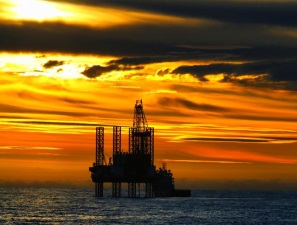Directed at the implementation of the company’s medium- and long-term strategic objectives, the programme is being implemented consistent with the previously approved plans.
Hydrocarbon production at Gazprom Neft in the first half of 2015 increased by 19.4 percent year-on-year, to 38 million tonnes of oil equivalent (mtoe) — the result of the development of the company’s SeverEnergia project, the consolidation of its interest in the Nortgaz project, increased production at the Prirazlomnoye field, the commencement of oil shipments from the company’s Badra project in Iraq, greater utilisation of associated petroleum gas (APG), and the successful application of cutting-edge technologies at mature fields. Total refining volumes across Gazprom Neft refineries in the first half of 2015 totalled 21.3 million tonnes. Sales through premium retail channels increased by one percent year-on-year, reaching 12.3 million tonnes, predominantly as a result of increased sales through the company’s filling station network, and a greater presence in refuelling operations at airports throughout Russia and internationally.
Higher production volumes and increased sales through premium retail channels delivered a 12-percent year-on-year increase in adjusted EBITDA (earnings before interest, taxes, depreciation and amortisation) in the first half of 2015, to RUB199.8 billion. Net profit attributable to shareholders in JSC Gazprom Neft increased by 28.3 percent in the first half of 2015, to RUB112.4 billion.
The Board of Directors adopted an amendment to the 2015 investment programme, increasing the previously agreed budget by 10 percent, to RUB379.5 billion: the key factors for this increase being currency fluctuations and greater investment in oil production across the company’s new and established assets.
The company continued to build its competencies and experience in horizontal drilling throughout 2015 — an essential requirement in the development of hard-to-recover (“tight”) reserves. Horizontal drilling is expected to account for more than 57 percent of all drilling operations in 2015.
The company also continued its development of new and significant projects in the north of the Yamalo-Nenets Autonomous Region, completing the first winter season the Novoportovskoye field with the first shipments of oil by sea, as well as starting construction of a gas processing facility. The company also commenced production drilling at the Vostochno-Messoyakskoye field, as well as continuing production at the Prirazlomnoye project — the first such project on the Russian Arctic Shelf.
The company’s investments in oil refining are the result of the second stage of its refinery modernisation programme being brought into action, directed at increasing production depth and output of light oil products, with the installation of a new-generation integrated refining facility at the Moscow Refinery, as well as the company commencing reconstruction of the catalytic-cracking complex. Reconstruction of major production facilities will continue at the Omsk Refinery throughout 2015, including reconstruction of a residue-reduction facility (for the deep refining of heavy oil (mazut)), and a primary crude distillation unit. The company is also implementing a range of environmental initiatives throughout its refineries, as well as projects directed at improving energy efficiency.
The Board of Directors also reviewed information on the work of the company’s internal audit department (responsible for monitoring the effectiveness of internal controls over the company’s various business processes, as well as conducting detailed investigations into its financial and business activities, and confirming the security of subsidiary assets).
The department conducted a total 46 internal audits in the first half of 2015. The company’s “anti-corruption” hotline remains in operation. Work in risk management was focussed on improving the methodological basis for risk assessment, as well as developing procedures for identifying, analysing and evaluating risks throughout the company’s major upstream investment projects.
More broadly, the Board of Directors also considered the company’s activities in environmental protection, including natural resources management, waste reduction and recycling, and the optimum location of its exploration and production activities in terms of the natural environment and the protection of unique natural ecosystems and habitats.
The implementation of environmental initiatives will allow the company to achieve a two-fold reduction in total atmospheric emissions in 2015, in comparison with 2012 levels. One of the most important ecological initiatives implemented by the company in 2015 was the installation of a system for the automatic monitoring of atmospheric emissions at the Moscow Refinery. The only such system at any of Russia’s refineries, this system allows the monitoring of air quality throughout the plant and its surroundings, in real time.
This year has also seen Gazprom Neft begin developing a strategy for the management of drilling and production waste, with the company designing and installing its own technology for the production of safe base coatings from drilling wastes (drill slurry) obtained in sump reclamation: a technique which has now been approved under an environmental impact assessment by the Federal Service for Environmental Control.
As the first company to begin work on the Russian Arctic Shelf, Gazprom Neft is actively involved in programmes directed at protecting the ecosystem of the Russian Arctic. Since 2009 Gazprom Neft, together with the Marine Mammal Council and the World Wildlife Fund (WWF Russia) has been implementing a programme on the study of Arctic fauna, which has, throughout 2014 and 2015, allowed collaborative field research to be undertaken on the Atlantic walrus, and has allowed key glacial habitats of this animal to be reclaimed.
A further major initiative in 2015 has been the establishment of a corporate programme directed at protecting the biodiversity of the flora and fauna of the marine ecosystems of the Russian Arctic. This programme has been developed at the instruction of the President of the Russian Federation, with input from environmental experts, the Ministry of Natural Resources, and WWF Russia.
27 Декабря 2025 | суббота | 14:45


